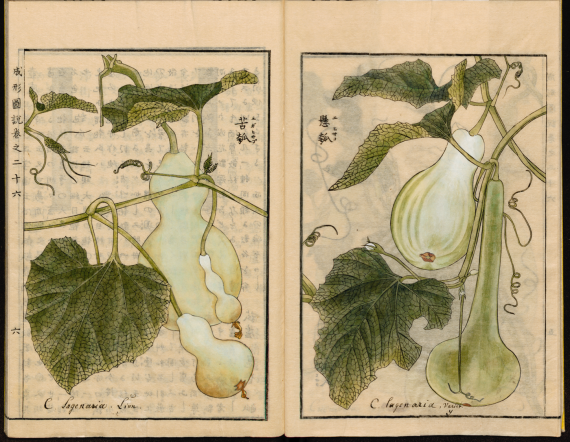Abe investigated Japanese agriculture in around 1800 by studying an exceptional book, a Japanese work on rice paper that the doctor and botanist Philipp von Siebold received as a gift in the nineteenth century and brought back to Leiden. Abe, a Japanese student in Organic Agriculture, was the perfect person to assess that booklet, says his supervisor Tinde van Andel, professor in Ethnobotany.
Drawings
Abe looked at the 191 drawings of Japanese crops in around 1800, read the Japanese names and information in the booklet and came to some surprising conclusions. Von Siebold introduced Japanese lilies to the Netherlands as a decorative plant but in Japan they were grown for their bitter but tasty bulbs. The botanist also introduced the greater burdock to the Netherlands, known for the burrs that stick to your clothes. The Japanese eat the roots of this plant but it is seen as a weed in the Netherlands. Radishes too come from Japan, as demonstrated by the ten different varieties in the booklet. They don’t look much like modern radishes.
There was surprising diversity in cereals in Japan around 1800, says Abe. In addition to rice, the botanical booklet mentions millet, barley and buckwheat. That shows that Japan did not live in splendid isolation before Von Siebold arrived in 1823, as is often thought, but already had trading relations with the Portuguese and Chinese. The booklet has drawings of peppers, for example, that must have been introduced by the Portuguese.
The forgotten crops from Japan could be useful for plant breeding companies that want to develop traditional crops with favourable properties. The catalogue contains a lot of cereals, for instance, that tolerate dry conditions.

